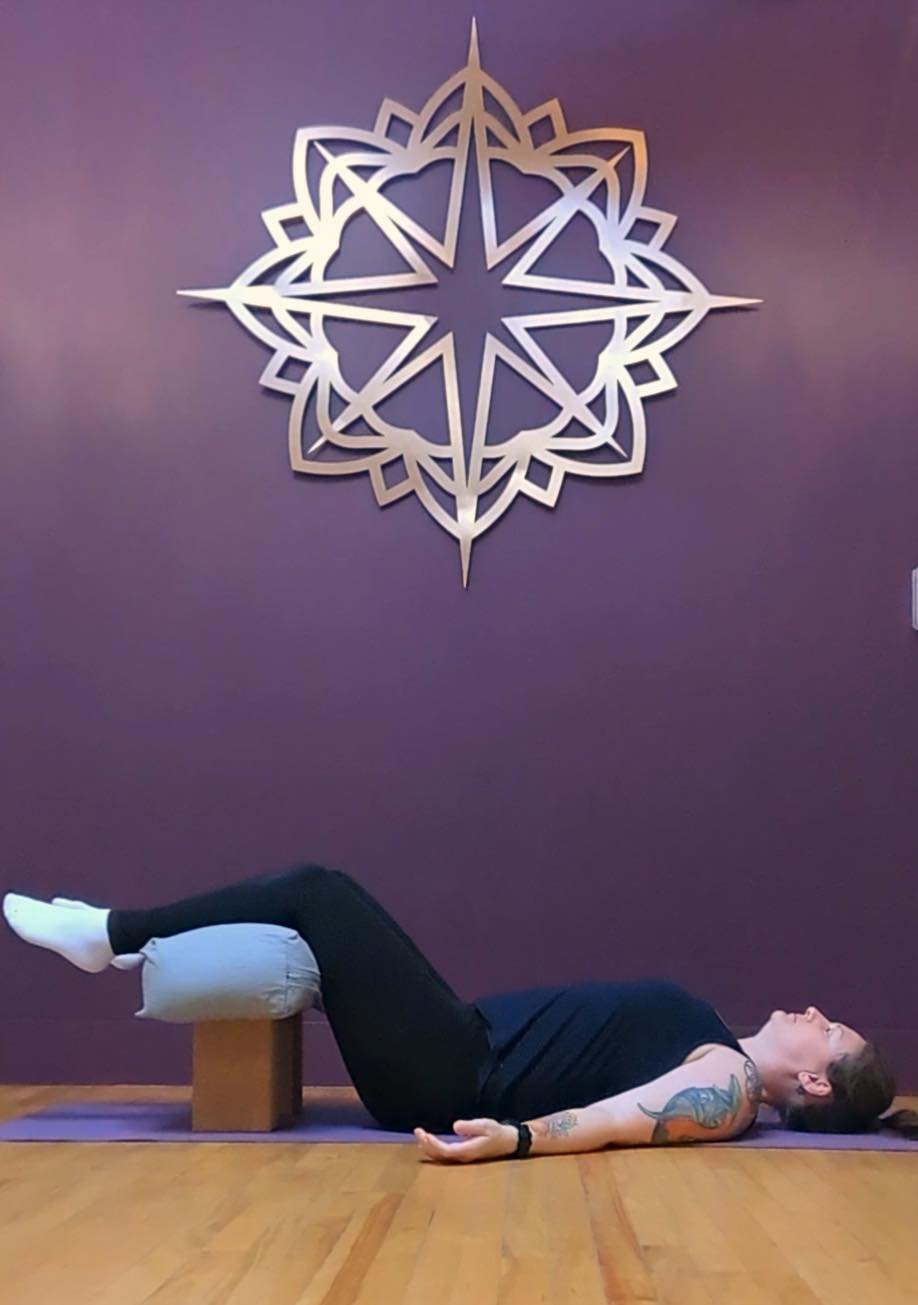Restorative Breakdown: Supported leg raise
Want more restorative content? Click the tag at the bottom left of this post to see more on this subject!
by Megan
Supported Leg Raise is an even softer restorative version of “legs up the wall” with all the same benefits.
Using props of two blocks and a bolster, we make a little Stonehenge-like structure under the knees to lift the legs and suspend them comfortably. The bend in the knee creates less strain through the hamstrings and the back of the legs than in a traditional legs-up-the-wall pose.
Benefits of this yoga pose?
In restorative yoga, supported leg raise is a rejuvenating, supported inversion. In this position, we use props, such as blocks, stacked under a bolster to support holding the lower legs above the heart. Additionally, this shape helps settle the muscles of the low back by bringing the pelvis into a posterior (backwards tilting) position. It also creates a slight flexion (rounding, in this case) of the lumbar spine. This helps to counteract the forward-tilting posture that comes from sitting and standing throughout the day.
Supported legs raised benefits for the circulatory system, as all inversions do when the legs are higher than the heart. This posture reduces blood pressure and lowers heart rate, generally supporting venus return of blood to the heart. Think of it as a reset for your cardiovascular system; this downregulation of the system helps to engage the relaxation response.
How to use props in this shape
Use a bolster laid over two stacked blocks to create a Stonehenge-like structure.
Move to lie on your back with calves along the back of the bolster, raising your lower legs.
Allow the calves to be supported by the bolster with the ankles hanging off the other side of the bolster.
Arms come to wherever is most comfortable - this could be to rest on the belly, or open to the side with palms up to stretch through the chest.
You may choose to bring a blanket under your head to support your neck.
Alternatively, feet can rest on the center of the bolster with knees wide for a supported hip opener in this shape.
In this version of the shape, the outsides of the feet and lower shins lie along the bolster. The knees will then open wide for an elevated hip opener.
Don't have props?
That's okay, we’ll recreate this shape at home!
Lie on the floor and rest your legs in the seat of your couch or up the side of your bed for support. It might feel nice to add a pillow under your head to support your neck.
Give it at home a try sometime and see what variation you like best.
General restorative considerations
In restorative yoga, the goal is to support a relaxation response that engages the parasympathetic nervous system (responsible for rest and digestion). The calming effect of this response allows the body and mind to settle, supporting the body’s focus on healing, digestion, and reducing stress.
Postures are typically held for 7-12 minutes, made possible in part by the extensive use of props to support the shape. During this time,you should feel supported enough to relax into these shapes without using effort to hold yourself or experiencing the sensation of stretching.



